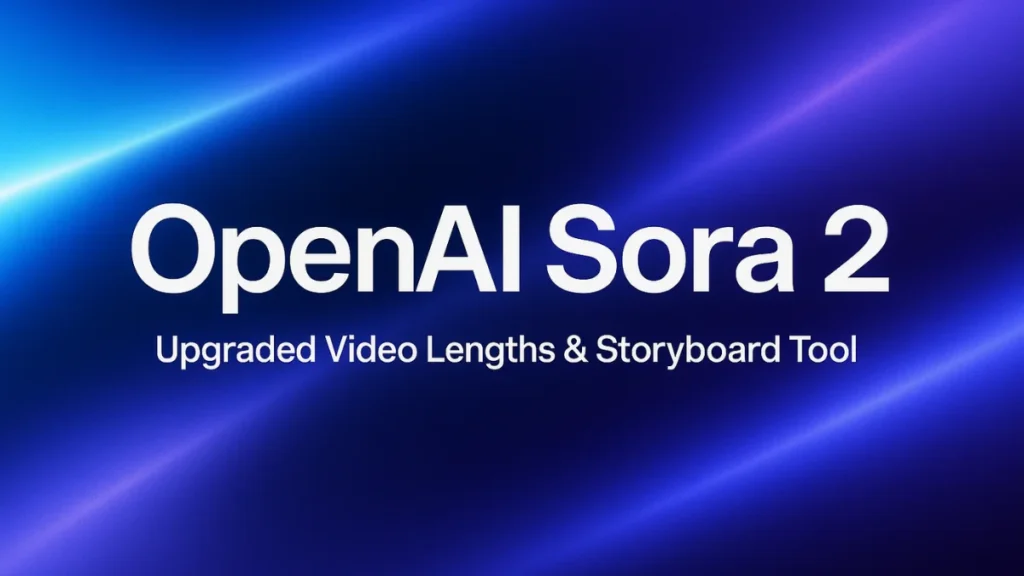OpenAI just supercharged its Sora 2 video model — and it’s a leap for creators.
Now, ChatGPT Pro users can plot videos frame by frame with a storyboard editor, and all users can generate longer clips of up to 15 seconds on the app or web; Pro users can push to 25 seconds via storyboard.
Key Takeaways
- New storyboard tool lets Pro users plan videos frame by frame
- All users get 15-second video generation on app and web
- Pro users can generate 25-second clips via storyboarding
- Update currently limited to U.S. and Canada only
- Moves push AI storytelling toward finer control
OpenAI’s Sora 2 update introduces a new storyboard mode for Pro users to plan frame-level detail, and extends video limits: 15 seconds for all users, and up to 25 seconds via storyboard. The changes aim to give creators deeper control over narrative pacing.
What’s New: Storyboards & Longer Clips
Sora 2 now includes a beta storyboard editor (web-based) for ChatGPT Pro users. This lets creators pick and adjust individual frames and outlines along a timeline. Meanwhile, OpenAI has extended the clip length: all users may generate up to 15 seconds of video on both app and web; Pro users can push to 25 seconds when using the storyboard mode.
These tweaks build on Sora 2’s earlier launch, which already emphasized better physical accuracy and synchronized audio.
According to OpenAI’s help documentation, the storyboard tool “enables you to create a video by selecting the individual frames, by timestamp, that you want generated.”
2 Sora 2 updates:
— OpenAI (@OpenAI) October 16, 2025
– Storyboards are now available on web to Pro users
– All users can now generate videos up to 15 seconds on app and web, Pro users up to 25 seconds on web pic.twitter.com/iINg7alWGL
Why It Matters for Creators
Short-form video is exploding across social feeds and educational content. By giving creators frame-level control, OpenAI is letting users ramp up nuance—things like emotional beats, pacing, or educational pauses—in ways not possible in a single-shot generation.
Longer clips also open new use cases: micro narratives, explainer snippets, or more expressive AI content. The constraint still remains (15–25 seconds), so it’s not replacing full-length video, but it widens creative options.
Restrictions & Geographic Scope
These updates are currently only in the U.S. and Canada. There’s no word yet on global rollout.
Additionally, OpenAI has been under pressure around copyright and control. In early October, the company signaled that content owners would gain “more granular control” over use of their characters, and that revenue-sharing schemes might follow.
Hollywood studios and talent agencies have reportedly voiced concern, calling for compensation or opt-out rights.
Reactions & Competitive Push
Industry watchers see this as a tactical move ahead of rivals. Google, for instance, is gearing up with Veo 3.1, which may allow even longer and more complex videos.
Meanwhile, creators and AI skeptics alike are scrutinizing watermarking and deepfake safeguards. Some third-party tools already claim to strip watermarks from Sora videos, raising questions about misuse.
What Comes Next
- Wider rollout beyond North America
- Further length expansion beyond 25 seconds
- Content-owner monetization tools and opt-in/opt-out options
- Tighter moderation and watermarking to guard misuse
- Competition escalation from Google, Meta, and startups
Conclusion
This update pushes Sora 2 closer to a practical storytelling tool rather than a gimmick. But creative promise comes with responsibility — and OpenAI still walks a tightrope around copyright and trust.
